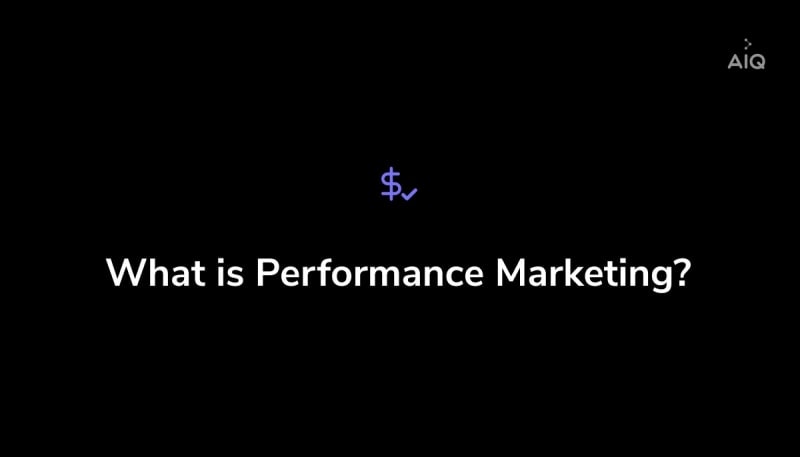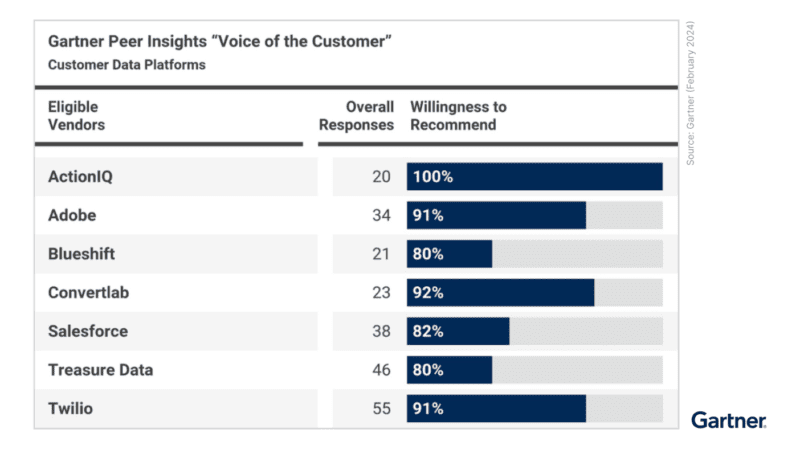What is Performance Marketing?

The Performance Marketing Association defines performance marketing as “online marketing and advertising programs in which advertisers and marketing companies are paid when a specific action is completed, such as a sale, lead or click.”
What Makes Performance Marketing Different?
Performance-based marketing flips the paradigm of traditional marketing. In the past, advertisers paid up front to purchase a certain amount of exposure or reach — for example, by buying ad space in a publication with a given number of readers and subscribers, by sponsoring a special event in return for visibility and other techniques. The fee paid had no direct relationship to the results the marketing might have produced or how it affected the bottom line.
By contrast, in performance marketing, the advertiser only pays when a content publisher, marketing agency or affiliate achieves a specific, measurable, pre-defined result for the performance marketing campaign. This could be the actual sale of a product or service, or the result could be defined as page views, clicks on an ad or leads generated.
Sometimes, digital performance marketing is confused with affiliate marketing — an arrangement in which an independent marketer, salesperson, advertiser or business is paid a commission in return for a specific result. While affiliate marketing is a form of performance marketing, performance marketing is itself a much larger category.
Upcoming Changes in the Performance Marketing Landscape
Performance marketing has primarily been a tool for customer acquisition, which is based largely on anonymous, third-party customer data gathered by social media and other advertisers. In parallel, the job of customer retention has been left to customer relationship management (CRM) teams with their own separate systems and processes, all of which work with first-party customer data — that is, information collected from customers’ direct interactions with the brand.
However, the advent of customer data platform (CDP) technology, increasing controls on third-party data and the need to develop seamless end-to-end customer journeys have begun to blur the lines between CRM and performance marketing. That blurring of lines is set to accelerate as big adtech companies like Apple, Google and Facebook continue to respond and react to consumers’ demand for increased privacy protections. More on that further down in this post (and if you want to go further in depth on the topic, check out the blog post “Is Digital Marketing Dying?”).
How Precision Tracking Enables Performance-Based Marketing
“Half the money I spend on advertising is wasted; the trouble is I don’t know which half,” said John Wanamaker, a marketing genius who owned a successful chain of retail stores. He knew he was successful at attracting customers, but he had no idea which of the newspaper, magazine or billboard ads were actually bringing customers to the store and which were ineffective. Even today, it can still be difficult to quantify the exact effect of mass media advertisement.
The advent of the internet, however, has enabled marketers to track the measurable effects of a performance marketing effort with precision. This is possible because the internet allows for consumers to immediately take action on the marketing content they see, whether signing up for an email newsletter, clicking a digital ad or making an online purchase. In each case, a user’s online behavior leaves a digital footprint that can tell marketers which content prompted a consumer to click, buy or fill out an online form.
This ability for consumers to interact with digital content — and for an affiliate or publisher to track that interaction with precision — makes campaign performance marketing possible.
Because advertisers only pay an affiliate or publisher when the consumer performs a specific action, advertisers can better manage budgets and return on advertising spend (ROAS). They can also invest in advertising with greater confidence, certain the money they spend is achieving a desired result. At the same time, the publisher, performance marketing agency or affiliate is motivated to come up with creative ways to ensure they deliver relevant content to the right person at the right time, since they will reap greater rewards as a result. That’s why performance marketing is widely considered a win-win for all parties.
Benefits of Performance Marketing
While performance marketing can be a great source of revenue for publishers and affiliates, let’s consider the three principal benefits to the advertisers themselves.
Lower Risk
Even John Wanamaker, an innovative and highly successful marketer, admitted that half of his investments delivered no return. When marketers are not able to measure the results of their investment and may be wasting precious capital, they are more hesitant to act.
By paying only when they achieve specific results, marketers don’t just eliminate the possibility of wasting money on underperforming advertising campaigns. They also have the confidence to invest in strategies that, in the absence of guaranteed results, may have seemed too risky. A recent McKinsey survey found that 45% of CFOs said marketing proposals were rejected, or only partially funded, because they did not show a clear line to value. When you only pay for real-world, measurable results, CFOs are much more likely to give the green light.
No doubt it’s this degree of confidence in performance-based marketing that’s driven the global annual spend on digital advertising above $325 billion.
Ease of Performance Tracking
In the old days, a brand might invest in a major product launch marketing campaign with advertising that spanned newspapers, magazines, billboards and television advertising. Perhaps the launch proved very successful, with higher-than-expected sales. Great news! And yet the advertiser still had no way of knowing which marketing channel actually drove sales. At best, the brand could estimate which worked and make an educated guess as to why.
With performance advertising, the advertiser doesn’t have to rely on estimates or guesswork. They understand exactly what worked and what didn’t, down to each user’s individual click of the mouse (or lack thereof). As a result, they glean far greater insight from a campaign and can use those performance metrics to guide future campaigns with much greater precision.
The same is true of the publisher, agency or affiliate working on behalf of the advertiser. They, too, can use these fine-grained performance metrics to guide their own strategies for delivering display ads, native ads, banner ads, sponsored slots and more to the ideal target audience.
Sharp Focus on Return on Investment
Success advertising has straightforward parameters: Your ads must generate more revenue than the total cost of creating and distributing those ads. Where an ad measurably leads to sales, the connection between marketing and revenue is abundantly clear.
To make that connection, advertisers and affiliate marketers typically have an abundance of data at their disposal. This includes granular data about the behaviors of individual consumers across multiple channels, enabling the performance marketer to create much more accurate measures of key performance indicators (KPIs) such as customer acquisition cost (CAC), incrementality, average order value (AOV) and more.
Performance marketers can use all those insights to tweak future campaigns. They can also adjust existing digital campaigns on the fly if necessary.
Because data is at its foundation, performance marketing also helps solve the problem of “vanity metrics” — numbers that sound impressive but don’t directly connect to business goals. For example, a digital brand’s advertising may lead to many views of a product page on the e-commerce website, but if those views convert poorly, then the ads have poor ROI. By enabling marketers to define performance around the KPIs that truly matter, performance marketing ultimately helps a brand make marketing decisions that enable it to reach business goals and realize revenue.
Top Performance Marketing Channels
Now that we’ve considered the principles of performance marketing and its business advantages, let’s consider the top channels that enable successful performance marketing strategies. Note that the terms can blur (e.g., native advertising can be a form of social media advertising and/or sponsored content).
Native Advertising
Native advertising is similar to what is sometimes called advertorial. That is, advertising content that mimics editorial content. Taking the form of a video, article or editorial, the content is designed in such a way that consumers do not necessarily recognize it as a form of marketing.
However, native advertising goes one step further than traditional advertorial content by consciously mimicking the specific voice and design of the media channel in which it appears. Native ads can appear in social media platforms such as Facebook and Instagram. In these performance marketing platform cases, the design and content appears to be a typical social posting and blends seamlessly into a user’s feed.
Sponsored Content
Sponsored content is premium content that a brand pays a publisher to distribute. Like native advertising, successful sponsored content blends with the publisher’s own content, though usually the distinction between editorial content and marketing content is clearer to discerning audiences. For example, it often includes a phrase like “sponsored by,” “presented by,” “paid post” or “powered by” in order to distinguish it from the publisher’s own content.
Despite such callouts, sponsored content can be a very effective way to reach consumers when the content is compelling to the same audience as the publisher. It can also appear more trustworthy than conventional marketing content, especially if the publisher is considered trustworthy and vets such content to ensure it’s of educational interest to its audience and that it’s not too obviously pitching a product or service.
Social Media Advertising
In one sense, social media is similar to conventional forms of brand advertising. A social media platform like Facebook or Twitter serves paid ads to a group of its users. However, social media channels are able to deliver much more sophisticated targeting than traditional “spray-and-pray” marketing (i.e., delivering a message to as large an audience as possible and hoping that it wins mindshare and leads to action — both of which can be hard to measure). By contrast, social media channels enable brands to connect consumers with very specific traits, including demographic, psychographic, geographic and behavioral traits.
Advantages of social media advertising include:
- Increased control: Social media gives you the ability to monitor real-time metrics and use them to optimize targeting, budgeting and creative on the fly.
- Highly targeted audiences: Besides paying only to serve ads to audiences with a very specific set of traits, you can also “remarket” effectively, delivering ads to users who are already aware of your brand and nudge them toward a specific action.
- Sophisticated tracking: Beyond reaching highly targeted audiences, you can gain instant feedback on the granular, real-world responses of users to your content and tweak the campaign accordingly.
Search Engine Marketing
Search engine marketing (SEM) involves paying the search engine provider to ensure a link to your content is displayed when a user searches particular keywords. Advertisers bid on keywords that users are likely to enter when they’re looking for content about a certain product or service. The paid ads then appear alongside the results of users’ queries. Google is the dominant player in search engine marketing.
Sometimes SEM is confused with search engine optimization (SEO). While they can work hand in hand, they’re distinct methods. SEO is the art and science of getting your content to rank highly based on the organic results that appear in the search engine results pages (SERPs). It does not involve payment for advertising — rather it requires creating content that search engines’ complex algorithms have determined is the best match to the user’s query.
Affiliate Marketing
Investopedia defines affiliate marketing as “an advertising model in which a company compensates third-party publishers to generate traffic or leads to the company’s products and services.” The advertiser incentivizes publishers (known as affiliates) to promote their products and services in return for a commission.
Most often, affiliate marketers are rewarded for a completed sale. However, sometimes clicks and other actions are rewarded. Affiliate marketing is a form of performance marketing since the company only pays when consumers take a specific action. Brands running an affiliate program can track the links that provide leads and, via internal analytics, measure how many of those leads are converted into sales.
Creating a Performance Marketing Campaign
Depending on your marketing objective and the channel you select, there are many different ways to develop a performance marketing strategy. The following steps provide a foundation for a successful marketing strategy.
Establishing a Marketing Goal
What is the goal of the campaign? Is it to drive 15,000 visitors to your landing page? Is it to double the number of sign-ups for your weekly newsletter? Your performance marketing strategy and campaign goal should be aligned for a well-targeted campaign. Additional digital marketing goals include: increasing website engagement, retargeting unsubscribed customers, building brand awareness and driving conversions or sales.
Select the Channel(s)
As mentioned previously, there are various performance marketing channels that enable a successful performance marketing strategy. Whether it’s native advertising, social media advertising or search engine marketing, it’s necessary to choose the performance marketing channel that best suits your objective.
Design and Launch Campaign
Creating a Facebook ad targeting those who recently made a purchase of your product? There are multiple ways to approach the design of a campaign. However, it’s important that the messaging is crafted with the intent and desired target audience in mind. Understanding the consumer’s needs and desires allows for a well-developed performance-based marketing campaign.
Monitor and Evaluate
As your campaign begins to generate data, it’s important to observe each individual campaign and evaluate its performance. By keeping track of important metrics such as your key primary indicator, or KPI, you are able to determine if you are accomplishing your marketing goal. For example, KPIs may include the number of website visitors, the conversion rate and customer retention.
Optimize and Adapt
Once you identify the strengths and weaknesses of your campaign, it’s imperative to adapt or pivot your strategy to further optimize it. For example, are you re-allocating the marketing budget to high-performing campaigns? Are you lowering your ad spend on an individual campaign? Taking everything into account to review the performance of the campaign enables marketers to adjust and develop new strategies.
The Future of Performance Marketing
The ability to measure results, respond in real time and reach audiences with little or no risk makes performance marketing an invaluable resource for marketers in 2021 and beyond. It’s fueling what is sometimes referred to as growth marketing — the ability to experiment with different channels and strategies, test strategies and specific messages, and iterate often in order to optimize business outcomes. Many brands now employ entire growth marketing departments to do just that.
Consumer Privacy Imperatives Will Alter the Landscape
However, like everything in this age of disruption, changes are brewing. Increasingly strict privacy laws are likely to make it harder to track the behaviors of individual users across different digital channels. The European Union led the charge with the implementation of the General Data Protection Regulation in 2018, followed by the California Consumer Privacy Act in the United States.
More recently, Apple announced changes to its identifier for advertisers (IDFA), which helps advertisers target and track users in apps on iOS devices. While Apple hasn’t eliminated the feature, the new default setting for Apple’s IDFA sharing will require users to opt in. As a result, experts exact as many as expect 80- 90% of users to opt out (versus about 30% before the change). Meanwhile, governments — and even Google itself — are beginning to implement other limits on access to third-party data.
Super-powerful microtargeting and cost-effective retargeting enabled by the likes of Google and Facebook will likely be impacted. But this doesn’t mean performance marketing is going away entirely — it’s just going to change. So what exactly will performance marketing look like?
The Next Generation of Performance Marketing Tech Will Emerge
In the absence of third-party data, marketers will double down on their investment in their own first-party data. To do so, they must improve their processes around collecting, organizing, analyzing and taking action on insights from data collected about their own customers (as they interact with the brand’s websites, apps and other online or offline properties). When done right, this data can give brands deep insight into the wants, needs and preferences of their current customers as well as prospects.
Fortunately, there is technology designed to do exactly this: customer data platforms. They’re architected for customer-centric marketing strategies that seek to maximize the value of first-party data by:
- Bringing together all your granular customer data and resolving it identify to individual customers
- Empowering marketing teams with analytics and tools necessary to design and execute personalized marketing strategies
- Orchestrating relevant customer experiences across any and all channels tailored to the wants, needs and preferences of both prospects and customers
With the help of a CDP, first-party data is a powerful stand-in for third-party data in performance marketing. For example, if you have an email address or a mobile number, you can retarget your customers on all the big platforms (including Facebook) without relying on anonymized third-party data. This means marketing must reconsider the organizational boundaries between acquisition-based performance marketing and retention-based CRM marketing. As rules and regulations continue to choke off the supply to third-party data, brands powered by the right platform as well as creative, dynamic, data-driven teams will prosper in this new marketing landscape.
Making the most of first-party data for performance marketing requires the development of accurate, richly attributed profiles as early as possible in your relationship with customers and prospects. Advances in marketing technology now make it possible to rapidly build a comprehensive, privacy-friendly view of customers across devices and channels.
Learn more about how ActionIQ and our partners are leading the way and contact us to learn how we can help your organization scale.





